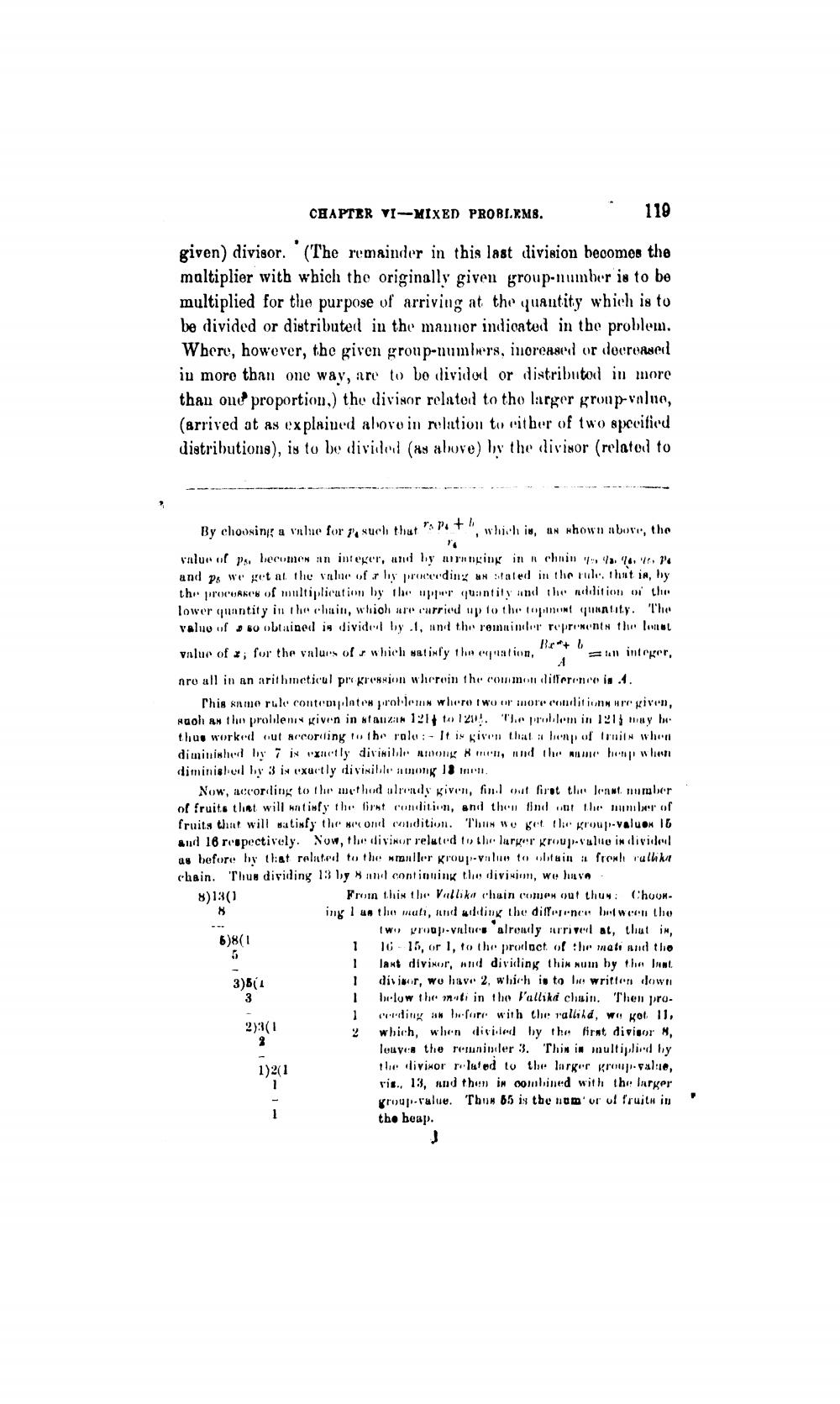________________
given) divisor. (The remainder in this last division becomes the multiplier with which the originally given group-number is to be multiplied for the purpose of arriving at the quantity which is to be divided or distributed in the manner indicated in the problem. Where, however, the given group-numbers, increased or decreased in more than one way, are to be divided or distributed in more than one proportion,) the divisor related to the larger group-value, (arrived at as explained above in relation to either of two specified distributions), is to be divided (as above) by the divisor (related to
By choosing a value for 7, such that "s P1 + b
74
which is, as shown above, the value of ps, becomes an integer, and by arranging in a chain a 4, P4 and ps we get at the value of r hy proceeding as stated in the rule, that is, by the processes of multiplication by the upper quantity and the addition of the lower quantity in the chain, which are carried up to the topmost quantity. The value of a so obtained is divided by 1, and the remainder represents the lost Br+ b value of ; for the values of which satisfy the equation, an integer, A are all in an arithmeticul progression wherein the common difference is 4.
This same rule contemplates problems where two or more conditions are given, such as the problems given in stanzas 1214 to 1294. The problem in 1215 may he thus worked out according to the rale: It is given that a heap of fruits when diminished by 7 is exactly divisible among 8 men, and the same hemp when diminished by 3 is exactly divisible among 18 men.
8)13(1 8
Now, according to the method already given, find out first the least number of fruits that will satisfy the first condition, and then find out the number of fruits that will satisfy the second condition. Thus we get the group-values 16 and 16 respectively. Now, the divisor related to the larger group-value is divided as before by that related to the smaller group-value to obtain a fresh rallika chain. Thus dividing 13 by 8 and continuing the division, we have
15551
CHAPTER VI-MIXED PROBLEMS.
6)8(1
3)5(1
119
2)3(1
1)2(1
From this the Vallika chain comes out thus: Chooning 1 as the mati, and adding the difference between the two group-values already arrived at, that in, 16-15, or 1, to the product of the mati and the
1
1
1
1
last divisor, and dividing this sum by the Inst divisor, we have 2, which is to be written down below the mati in the Fallika chain. Then pro1 cording as before with the rallikd, we got 11, 2 which, when divided by the first divisor 8, leaves the remainder 3. This in multiplied by the divisor related to the larger group-value, vis., 13, and then is combined with the larger group-value. Thus 65 is the num' or of fruits in the heap.
J




